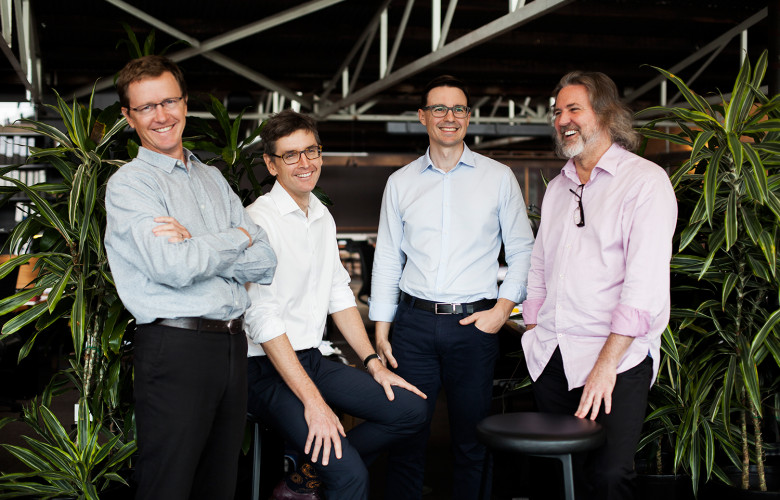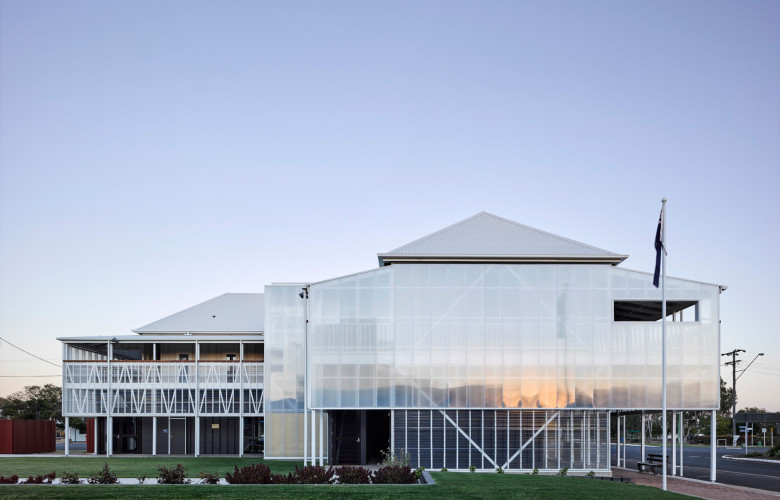Get to know Michael Lavery, director of m3architecture
Contact
Get to know Michael Lavery, director of m3architecture
Michael Lavery, director of m3architecture, would like to see Australians focus on the design of their public buildings as much as they focus on the design of their homes.
Michael Lavery is a director of m3architecture, the most awarded firm at the recent Australian Institute of Architects' 2017 National Architecture Awards.
Lavery spoke to SCHWARTZWILLIAMS about the firm's recent successes, and about his desire to see Australians focus on the design of their public buildings as much as they focus on the design of their homes. He says regional councils are increasingly aware of the importance of good design.
How did you first decide to become an architect?
For as long as I could remember I had wanted to be an architect. I had a love of drawing as a child and I thought that being an architect might be a wonderful way to pursue this.
What do you enjoy most about your job?
When I started the study of architecture I became aware that there was so much more to it than just drawing. Done well, the discipline requires a whole range of skill sets. Spatial awareness, mathematics, construction knowledge, problem solving, good communication and people skills are just some of them.
The work place is varied as well. The studio environment, getting to know clients in their own environments and being on site are all part of the joy of working in architecture.
Overarching all of this, I discovered that architecture is essentially about ideas, and I love ideas. The introduction of an appropriate but unexpected idea can change peoples’ lives. For example, we designed a master plan at Mount Alvernia College in Brisbane around a large working garden at its entry. It’s been transformative for both the school and the local community. This is the most enjoyable part of architecture for me.
m3architecture took out five awards and commendations at the recent Australian Institute of Architects' 2017 National Architecture Awards, making the firm the most awarded practice of the event. What do you attribute the firm’s success to?
My business partners and I have spent a long time developing ways of thinking and testing ideas, challenging each other, and encouraging our clients to see things differently. The recent awards results are an indication from our peers that we are doing some things right.
Related content: Australia's best architecture 2017: Australian Institute of Architects
Can you tell us about one of the winning designs, and what you think put it in the lead?
The Globe Hotel project in Barcaldine (in collaboration with Brian Hooper Architect) was a sensitive and complex project. More than a hundred years of local history reside in that building. Council’s initial reaction when it attracted funding for the project was to demolish the building. With careful consultation, and an open mind on council’s behalf, we managed to both renew the entry experience into the town and retain an important part of its local history by repurposing the old building in a contemporary way. Regional areas are in desperate need of confidence and renewal.
Winning an award for this work is like winning twice. Firstly, when the building is built and the community realises the tangible benefits of the project, and the second time when our peers recognise the value of this work.

Image: The Abused Children’s Trust (ACT) for Kids project at James Cook University in Townsville. Supplied.
What are some of the big trends you are seeing in architecture?
Over the last decade we have seen a broad renewed interest around the quality of design for the single family home. I am thinking here of all the books, magazines and TV shows on this topic. This sustained interest in architecture for housing is starting to see the public look beyond the backyard, to question and be more demanding about the quality of our libraries, our bus stations, our schools, even our streets and cities. Whilst it may be some time before we, as a community, care as much about the design of our new train stations as we do our homes, I believe this change is coming.
You work all over the nation, both in cities and in regional areas. Do you expect to see demand for good architecture growing in regional centres, and if so, why?
The link between well-designed buildings, and the quality of life for local residents and visitors to the regions, is now widely accepted. The growing role of tourism in the regions has only served to reinforce the importance of good architecture.
The most astute regional councils now understand that our public buildings and the streetscapes of our towns are an integral part of the regional experience. The demand for quality public space and good architecture, across the country, is still growing.
If you could change one thing in the architecture industry, what would it be?
We need to communicate a better understanding of design principles and of what architecture can be. This includes a broader understanding that good design often starts with pragmatic principles, which enables a reading of how buildings work and of why a building looks like it does. This kind of understanding will help free us more broadly of unhelpful public discussions around ‘style’ and ‘trend’ and will allows us, as a community, to focus on the important issues of architecture. Issues like:
- How we can embed an appropriate sense of culture into our buildings
- Whether we should have greater aspirations for our schools
- Questioning how we build and what we build with
- Whether we should be retaining old buildings instead of building new or whether we should be building at all in some circumstances
Is architecture a good profession for work / life balance and equal opportunity?
As a service provider in the building industry, and a profession made up largely of small businesses, work life balance will always be a challenge.
Like many businesses and professions in Australia, gender equity too is a work in progress. However, a lot of good work is being done in these areas by both academics and the profession. Architecture as a profession is taking a leadership role in these areas. Architecture in the workplace sense is improving and it remains a dynamic exciting environment, which is shaping our cities one building at a time.
Where do you live now, and what kind of home would you have if you could live in any home, anywhere in the world?
I live in a small house with a north-facing garden, close to public transport and local shops, approximately 10km north-west of Brisbane’s CBD. I have been lucky enough in my personal and professional life to experience life in houses located in small Australian regional towns and in apartments and houses in some of Asia’s busiest cities. Brisbane is my home, I chose to come back here, this is where I want to be.
Read more about Australian architecture:
Australia's best architecture 2017: Australian Institute of Architects
Get to know architect Shelley Penn
Get to know Peter McIntyre, 70 years as an architect and still at the drawing board








